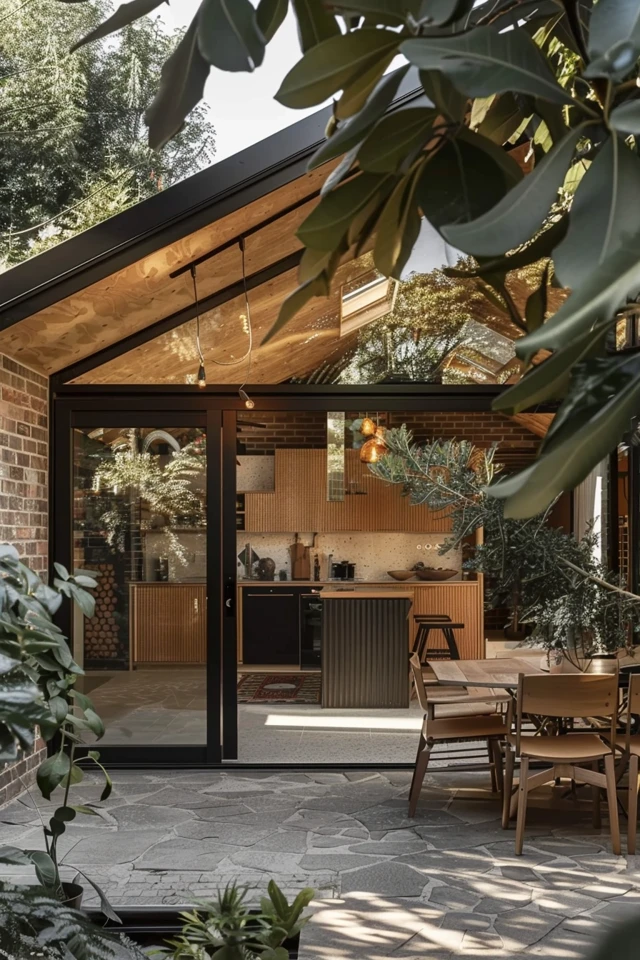When it comes to expanding your home, adding an extension can be an excellent option. It not only gives you more space but also enhances the overall design of your property. If you’re considering a hip roof extension, there are numerous ideas and designs to explore that can transform your home.
One idea is to square off the existing L-shaped roof by removing a part of it and adding taller trusses for the extension. This creates a seamless integration between the extension and the main structure while maintaining the hip roof design. Another option is to create a U-shaped configuration by building an addition that complements the existing hip roof. This can provide a distinct architectural element to your home while offering additional space.
Before embarking on any roof extension project, it’s crucial to consult with local authorities to ensure that any changes to the roofline comply with regulations. This will help you avoid any legal issues and ensure that your home expansion is carried out smoothly and in accordance with the required standards.
For those looking to maximize the available space, a two-story hip roof extension can be a great solution. By adding a second floor, you can significantly increase the livable area of your home while maintaining the elegant hip roof design.
Key Takeaways:
- Consider squaring off the existing L-shaped roof or creating a U-shaped configuration for hip roof extensions.
- Consult with local authorities to ensure compliance with regulations.
- Maximize space by opting for a two-story hip roof extension.

Hip Roof Styles and Design Considerations
When it comes to hip roof styles, there are several options to consider. One popular style is the Dutch gable hip, which combines elements of gambrel roofs and adds a flared slope for a dramatic look. Another option is the cross hip, which allows for a change in the direction of the home’s footprint.
An intersecting hip creates an addition that juts out from the rest of the house, while a pyramid hip features four sloping sides meeting at a point, preventing water pooling and debris accumulation. A half hip, also known as a clipped or jerkinhead roof, is a variation of a gable roof with the upper point squared off and replaced with a small hip.
When renovating or designing a hip roof, it’s important to choose materials that are durable and weather-resistant. Cedar shake roofing, Spanish barrel tile roofing, or old-world slate roofing are excellent choices that combine style and functionality for a modern hip roof makeover.
Advantages and Disadvantages of Hip Roof Extensions
Adding a hip roof extension to your home can offer a range of benefits. Firstly, it creates extra space that can be utilized for various purposes, such as additional living areas, bedrooms, or even a home office. The unique design of a hip roof extension also allows for more flexibility in creating interesting architectural features and distinctive rooflines, giving your home a visually appealing touch.
In addition to the increased functionality and design possibilities, a well-constructed and aesthetically pleasing hip roof extension can significantly enhance the curb appeal and overall value of your property. The sophisticated and elegant look of a hip roof can make your home stand out in the neighborhood and attract potential buyers in the future.

However, it’s important to consider the potential challenges that come with hip roof extensions. Compared to standard gable roof extensions, the construction process for a hip roof extension can be more complex and costly. It may require specialized framing techniques and a larger quantity of materials, resulting in higher expenses. Proper hip roof construction and framing are crucial to ensure the structural integrity and stability of the extension, so it’s essential to work with experienced professionals familiar with hip roof architecture.
In conclusion, while hip roof extensions offer numerous advantages, such as additional space and unique design opportunities, they require careful planning, construction expertise, and higher costs compared to simpler roof extensions. By considering both the benefits and drawbacks, you can make an informed decision about whether a hip roof extension suits your home and budget.


